Abstract
DNA probes that are specific for each of five predominant species of human colonic Bacteroides (B. thetaiotaomicron, B. uniformis, B. distasonis, "Bacteroides group 3452-A", and B. ovatus) were used to detect and enumerate these species in fecal samples from two adult volunteers. These five species are capable of fermenting many of the complex polysaccharides that are thought to be sources of carbon and energy for bacteria in the colon. Estimates for the concentrations of some of these species in feces have not been previously available because of the difficulties in differentiating colonic Bacteroides spp. by conventional biochemical tests. Our results indicate that all the species except B. ovatus were present in high numbers (greater than 10(9)/g [dry weight]) in the feces of both volunteers. However, the concentrations of the more versatile polysaccharide-degrading species within this group of organisms (7.6 X 10(9) to 12.0 X 10(9)/g [dry weight] for B. thetaiotaomicron; 2.9 X 10(9) to 6.3 X 10(9)/g [dry weight] for "Bacteroides group 3452-A") did not differ significantly from the concentrations of less versatile polysaccharide-degrading species (1.2 X 10(10) to 2.0 X 10(10)/g [dry weight] for B. uniformis; 5.8 X 10(9) to 8.4 X 10(9)/g [dry weight] for B. distasonis). B. ovatus was not detectable by our method. Since our lower limit of detection is approximately 1 X 10(9) to 2 X 10(9)/g (dry weight) of feces, this is consistent with earlier estimates that indicated that the concentration of B. ovatus in feces is near or below this value.(ABSTRACT TRUNCATED AT 250 WORDS)
Full text
PDF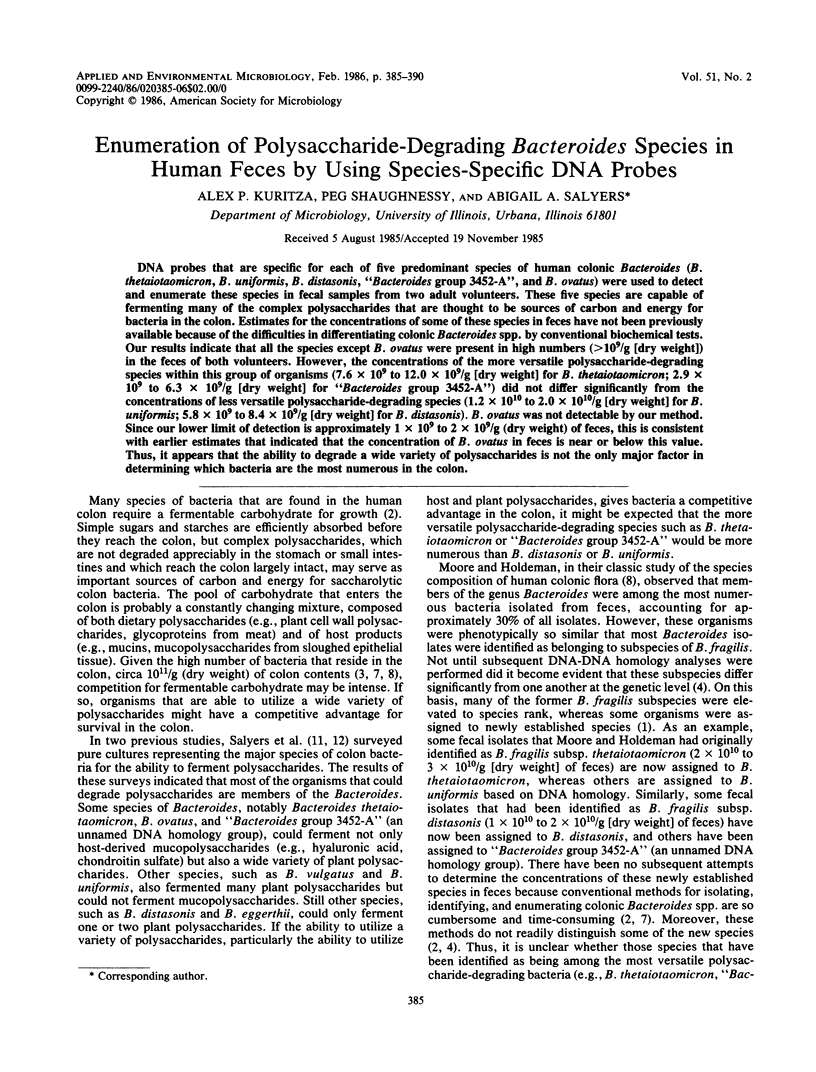
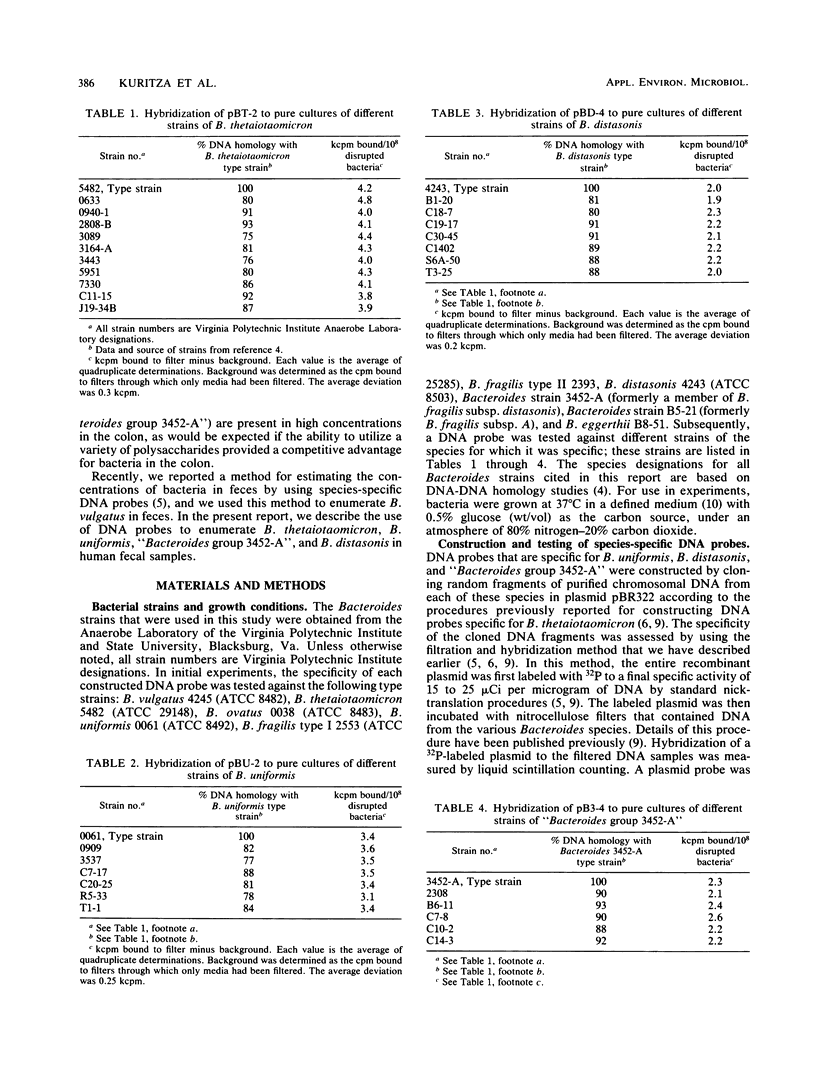
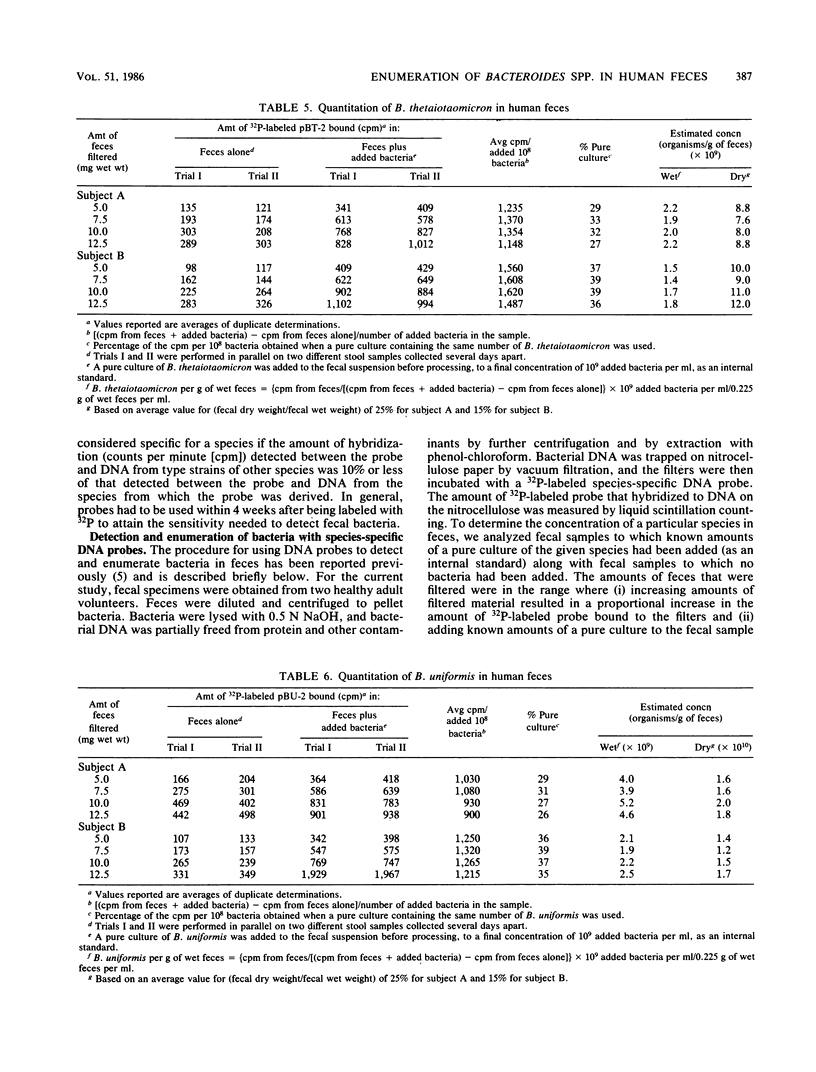
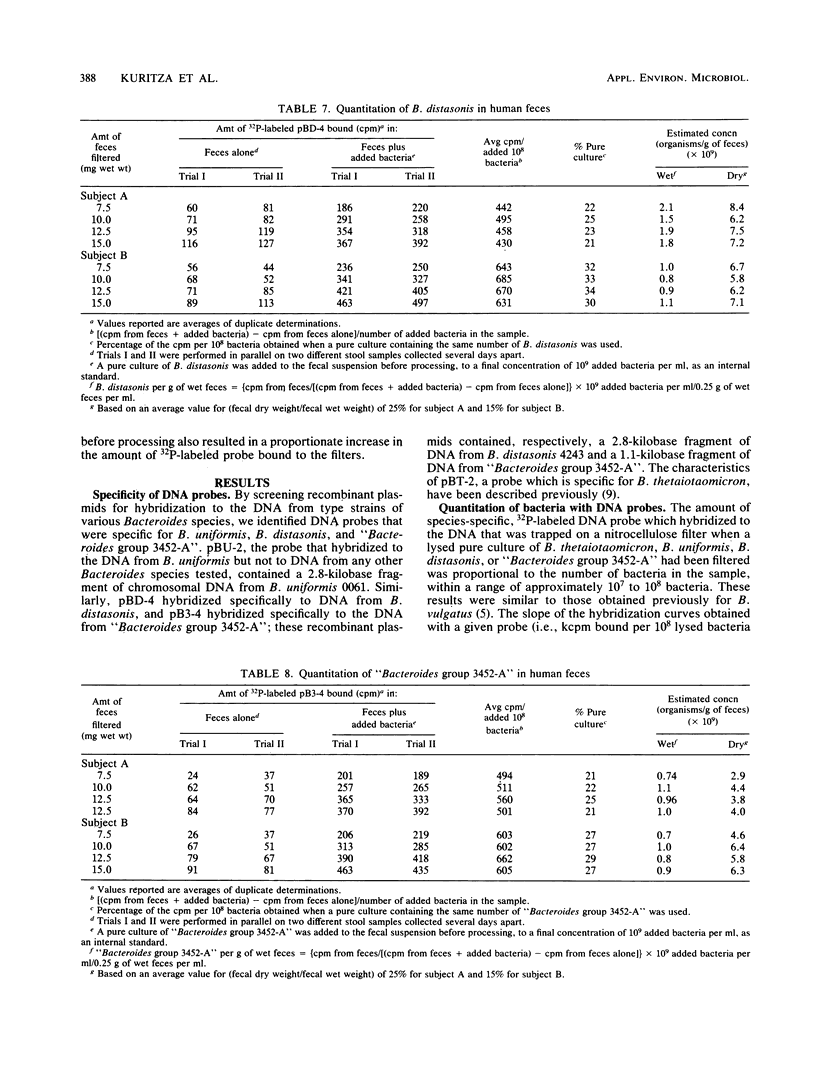
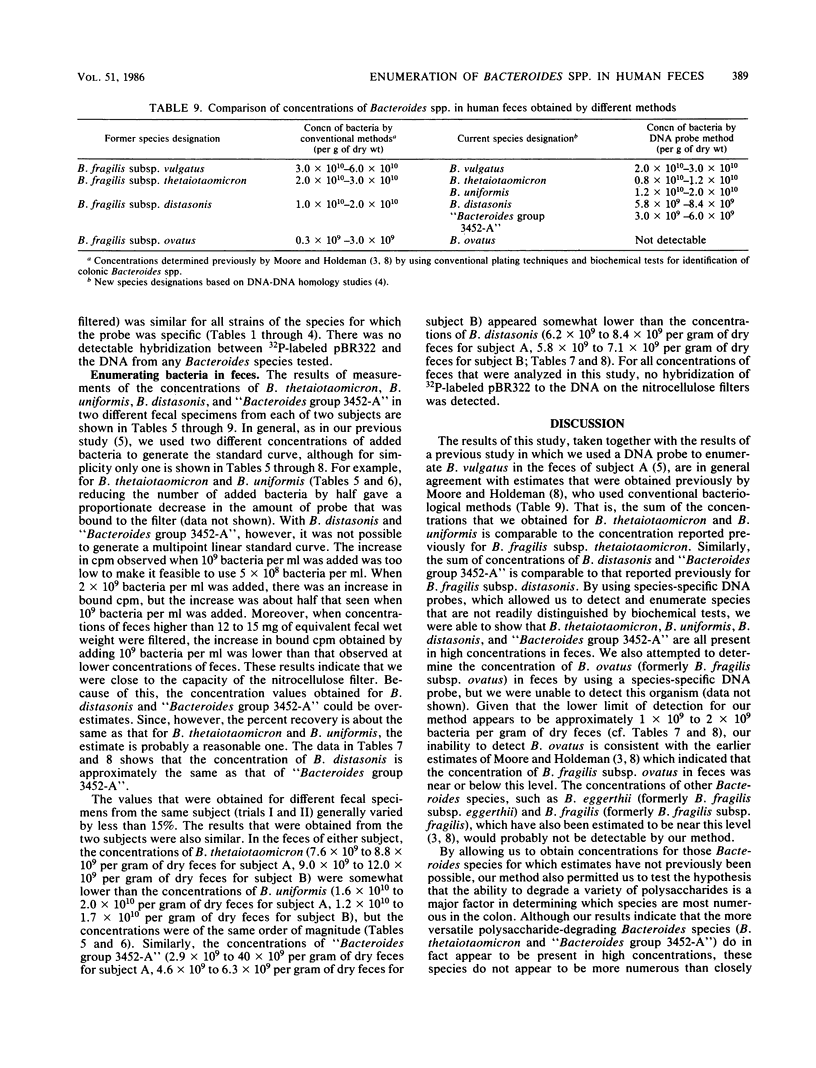
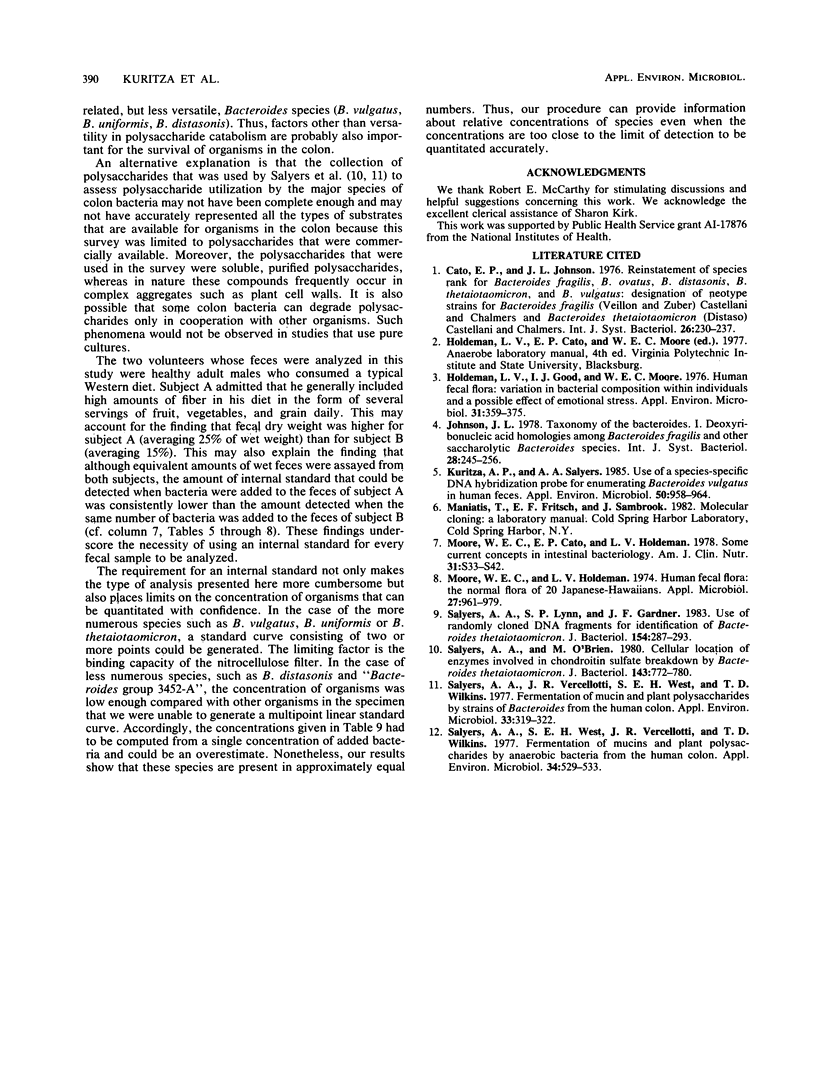
Selected References
These references are in PubMed. This may not be the complete list of references from this article.
- Holdeman L. V., Good I. J., Moore W. E. Human fecal flora: variation in bacterial composition within individuals and a possible effect of emotional stress. Appl Environ Microbiol. 1976 Mar;31(3):359–375. doi: 10.1128/aem.31.3.359-375.1976. [DOI] [PMC free article] [PubMed] [Google Scholar]
- Kuritza A. P., Salyers A. A. Use of a species-specific DNA hybridization probe for enumerating Bacteroides vulgatus in human feces. Appl Environ Microbiol. 1985 Oct;50(4):958–964. doi: 10.1128/aem.50.4.958-964.1985. [DOI] [PMC free article] [PubMed] [Google Scholar]
- Moore W. E., Cato E. P., Holdeman L. V. Some current concepts in intestinal bacteriology. Am J Clin Nutr. 1978 Oct;31(10 Suppl):S33–S42. doi: 10.1093/ajcn/31.10.S33. [DOI] [PubMed] [Google Scholar]
- Moore W. E., Holdeman L. V. Human fecal flora: the normal flora of 20 Japanese-Hawaiians. Appl Microbiol. 1974 May;27(5):961–979. doi: 10.1128/am.27.5.961-979.1974. [DOI] [PMC free article] [PubMed] [Google Scholar]
- Salyers A. A., Lynn S. P., Gardner J. F. Use of randomly cloned DNA fragments for identification of Bacteroides thetaiotaomicron. J Bacteriol. 1983 Apr;154(1):287–293. doi: 10.1128/jb.154.1.287-293.1983. [DOI] [PMC free article] [PubMed] [Google Scholar]
- Salyers A. A., O'Brien M. Cellular location of enzymes involved in chondroitin sulfate breakdown by Bacteroides thetaiotaomicron. J Bacteriol. 1980 Aug;143(2):772–780. doi: 10.1128/jb.143.2.772-780.1980. [DOI] [PMC free article] [PubMed] [Google Scholar]
- Salyers A. A., Vercellotti J. R., West S. E., Wilkins T. D. Fermentation of mucin and plant polysaccharides by strains of Bacteroides from the human colon. Appl Environ Microbiol. 1977 Feb;33(2):319–322. doi: 10.1128/aem.33.2.319-322.1977. [DOI] [PMC free article] [PubMed] [Google Scholar]
- Salyers A. A., West S. E., Vercellotti J. R., Wilkins T. D. Fermentation of mucins and plant polysaccharides by anaerobic bacteria from the human colon. Appl Environ Microbiol. 1977 Nov;34(5):529–533. doi: 10.1128/aem.34.5.529-533.1977. [DOI] [PMC free article] [PubMed] [Google Scholar]


